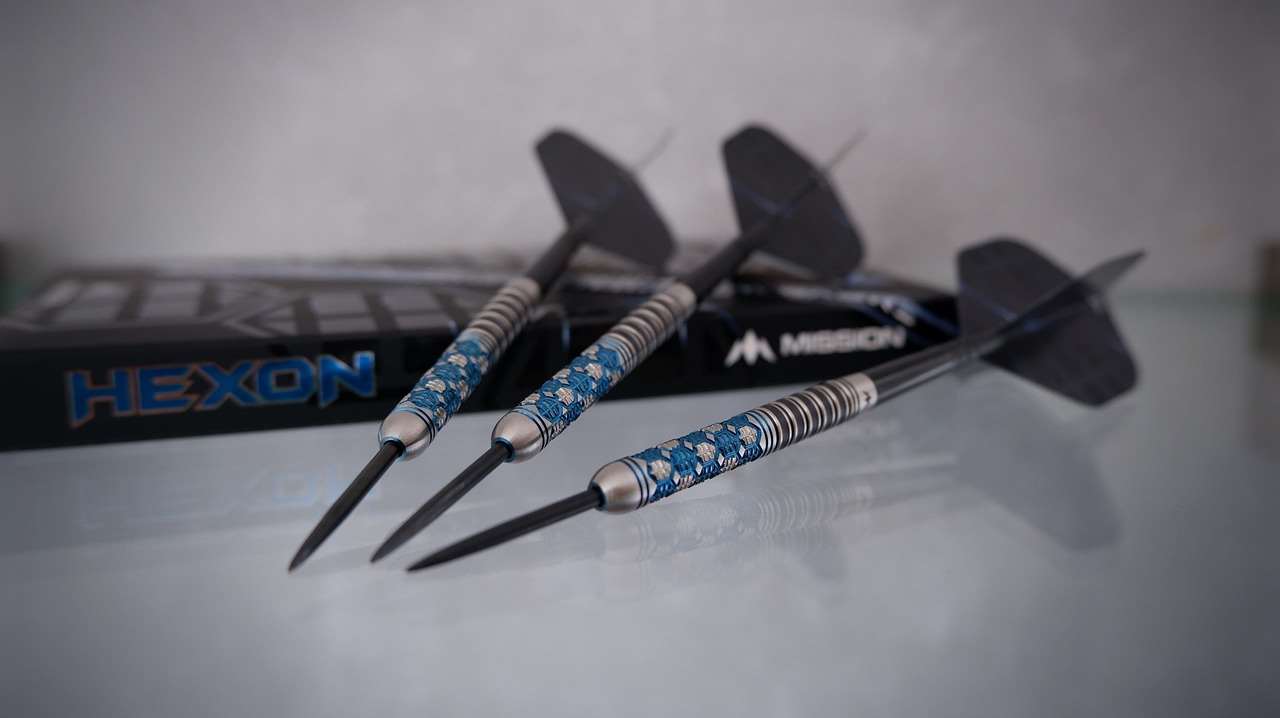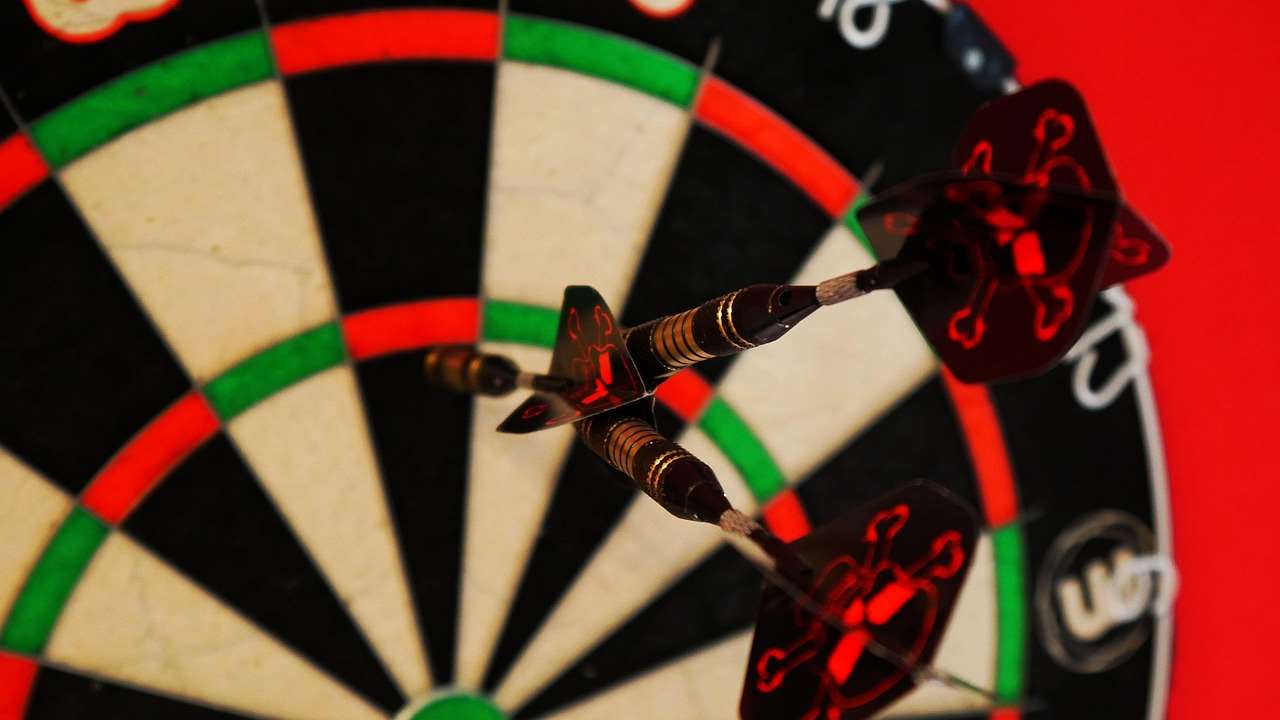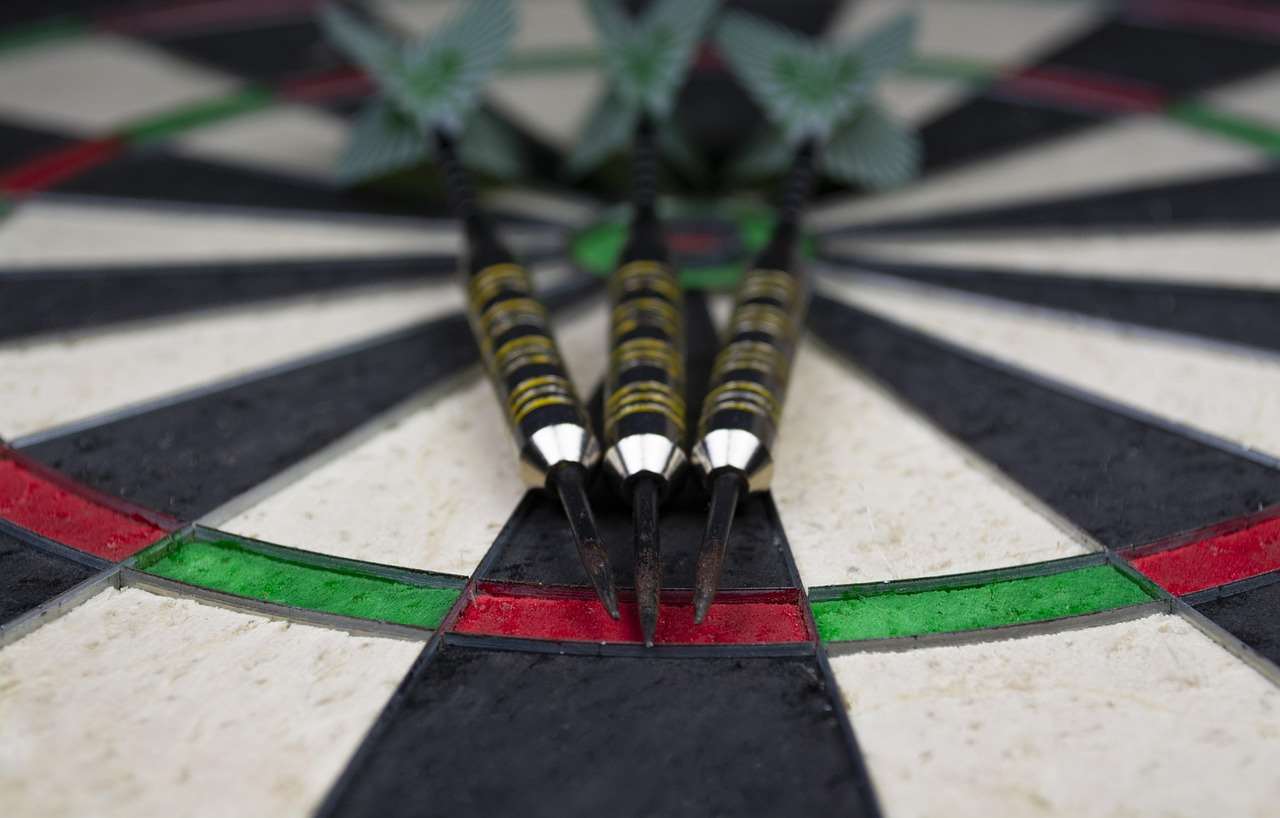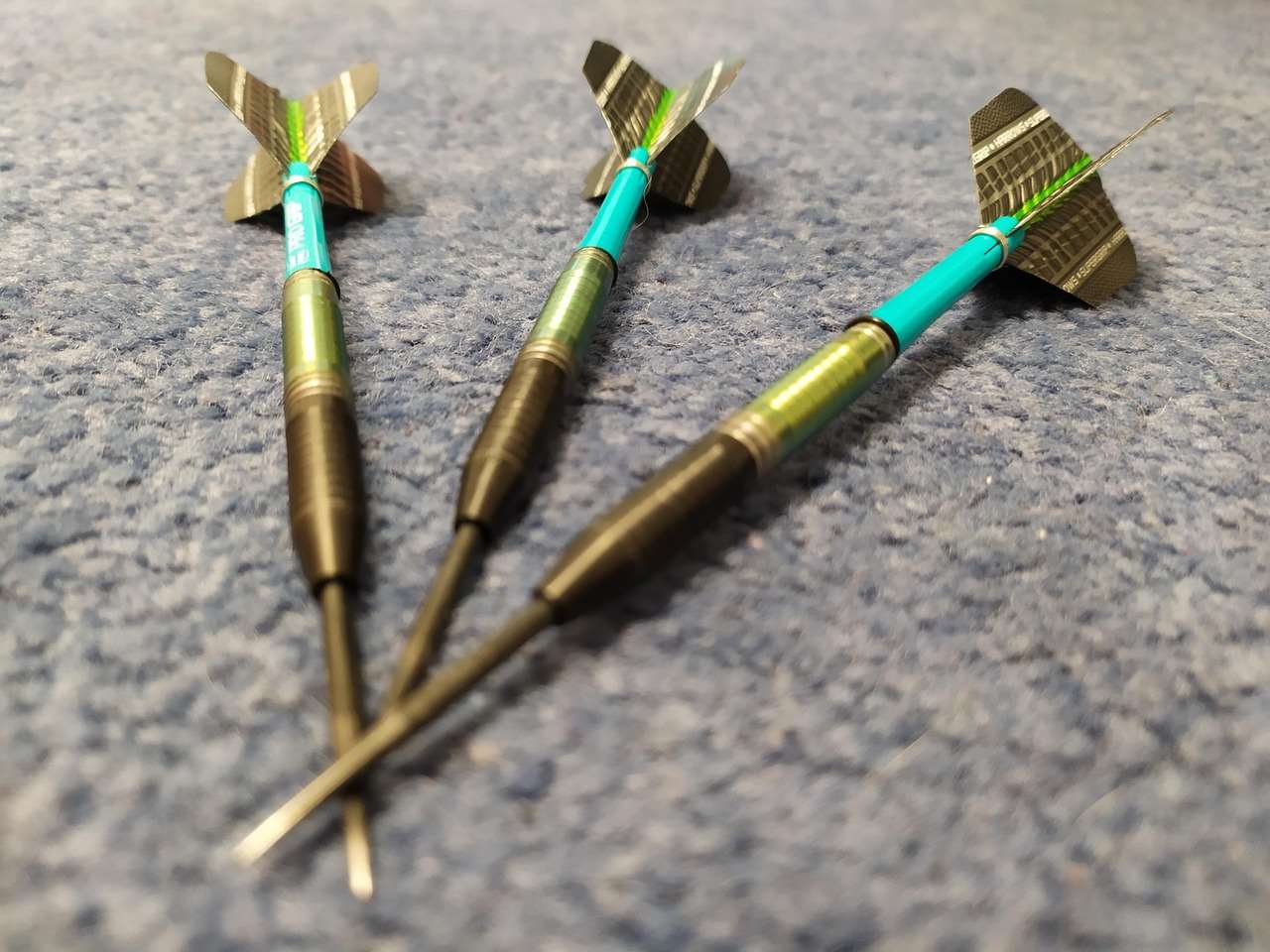Successful team darts conflict resolution boils down to open communication, clearly defined roles, and agreed-upon strategies for handling disagreements, ultimately ensuring fair play and a positive team environment. This article will explore common sources of conflict in team darts, effective resolution techniques, and strategies for preventing future issues, fostering a stronger and more cohesive team dynamic.
⚠️ Still Using Pen & Paper (or a Chalkboard)?! ⚠️
Step into the future! The Dart Counter App handles all the scoring, suggests checkouts, and tracks your stats automatically. It's easier than you think!
Try the Smart Dart Counter App FREE!Ready for an upgrade? Click above!
Understanding the Roots of Team Darts Conflict
Conflict in team darts, as in any competitive environment, is almost inevitable. Recognizing the common sources of these conflicts is the first step towards effective team darts conflict resolution. These sources can range from personality clashes to disagreements over strategy.
- Communication Breakdowns: Misunderstandings, lack of clear communication, and passive-aggressive behavior can quickly escalate tensions.
- Differing Skill Levels: Uneven skill distribution within a team can lead to resentment and blame, especially during crucial moments.
- Strategic Disagreements: Varying opinions on gameplay strategies, target selection, and risk assessment can trigger heated debates.
- Personality Clashes: Incompatible personalities and conflicting communication styles can create underlying tension and friction.
- Pressure and Expectations: The pressure to perform, win, and meet expectations can exacerbate existing tensions and lead to outbursts.
- Unclear Roles and Responsibilities: Ambiguous roles and responsibilities can create confusion and conflict over who is accountable for what.
Addressing these underlying causes proactively is crucial for preventing minor disagreements from evolving into full-blown conflicts. Furthermore, being aware of these issues allows the team to better navigate these situations when they arise, promoting a healthier and more productive team environment. It also is important to consider Darts Variants Fun Games which can reduce the competitive pressure.

Effective Strategies for Team Darts Conflict Resolution
When conflict arises, having a structured approach to team darts conflict resolution is essential. The following strategies can help teams navigate disagreements constructively and reach mutually acceptable solutions.
Active Listening and Empathy
The cornerstone of any successful conflict resolution process is active listening. Each team member should have the opportunity to express their perspective without interruption (except for clarifying questions). Empathy involves understanding and acknowledging the other person’s feelings, even if you don’t agree with their viewpoint. Try to put yourself in their shoes and see the situation from their perspective. This can defuse tensions and create a more receptive environment for finding common ground.
Clear Communication and Directness
Avoid passive-aggressive behavior and indirect communication. Express your thoughts and feelings clearly and directly, using “I” statements to avoid blaming or accusing others. For example, instead of saying “You always mess up the doubles!”, try saying “I feel frustrated when doubles are missed because it puts pressure on the rest of the team.” This promotes a more open and honest dialogue.
Collaborative Problem-Solving
Approach conflict resolution as a collaborative problem-solving exercise. Focus on finding solutions that address the needs and concerns of all parties involved. Brainstorming together can lead to creative solutions that no one had considered individually. Remember, the goal is not to “win” the argument but to find a resolution that benefits the team as a whole.
Mediation and Facilitation
If the conflict is particularly difficult or emotionally charged, consider involving a neutral third party as a mediator or facilitator. This person can help guide the discussion, ensure that everyone has a chance to speak, and facilitate the process of finding common ground. The mediator should be someone who is respected by all team members and has experience in conflict resolution.
Compromise and Flexibility
Be willing to compromise and be flexible in your approach. Not everyone can get everything they want, and sometimes the best solution involves meeting halfway. Focus on the overall team goal and be willing to make concessions to achieve it. Remember that a willingness to compromise demonstrates a commitment to the team and its success.
Focus on the Issue, Not the Person
It’s vital to address the specific issue at hand without resorting to personal attacks or character judgments. Keep the discussion focused on the behavior or action that caused the conflict, not on the individual’s personality traits. Frame criticism constructively by suggesting specific ways to improve future performance, rather than simply pointing out flaws.

Preventing Conflicts Before They Arise
The best approach to team darts conflict resolution is to prevent conflicts from arising in the first place. By establishing clear guidelines, fostering open communication, and promoting a positive team culture, you can minimize the likelihood of disagreements escalating into major issues.
Establish Clear Roles and Responsibilities
Clearly define each team member’s roles and responsibilities. This helps avoid confusion, overlap, and potential conflicts over who is accountable for what. Make sure everyone understands their specific duties and how they contribute to the overall team effort. This also includes setting expectations for attendance, punctuality, and participation in team activities.
Develop a Team Communication Protocol
Establish clear communication protocols that outline how the team will communicate with each other, both on and off the dartboard. This includes specifying the preferred methods of communication (e.g., email, text message, face-to-face), the expected response times, and guidelines for providing feedback. A team communication protocol can also address how the team will handle disagreements or conflicts that arise during practice or competition. Remember some teams even have forgotten pub dart games they enjoy together.
Set Ground Rules for Fair Play
Establish clear ground rules for fair play and sportsmanship. These rules should address issues such as cheating, arguing with referees, and disrespectful behavior towards opponents. Enforce these rules consistently and fairly to create a culture of respect and integrity within the team.
Promote a Culture of Open Communication
Encourage open and honest communication among team members. Create a safe and supportive environment where everyone feels comfortable expressing their thoughts and feelings without fear of judgment or reprisal. Regularly solicit feedback from team members on how the team is functioning and identify areas for improvement.
Team-Building Activities
Organize regular team-building activities to foster camaraderie and strengthen relationships among team members. These activities can range from social outings to strategic planning sessions. The goal is to create opportunities for team members to connect with each other on a personal level and build trust. Strong team bonds can significantly reduce the likelihood of conflict. Be mindful that these history of darts games uk are full of traditions to unite a team.

Dealing with Difficult Personalities
Sometimes, even with the best preventive measures, you may encounter difficult personalities that can disrupt team harmony and lead to conflict. Recognizing these personality types and developing strategies for dealing with them is crucial for effective team darts conflict resolution.
The Aggressor
Aggressors tend to be confrontational, domineering, and quick to anger. They may try to intimidate others or use bullying tactics to get their way. When dealing with an aggressor, it’s important to remain calm and assertive. Don’t back down or get drawn into an argument. State your position clearly and firmly, and don’t be afraid to stand your ground. If the aggressor’s behavior becomes abusive or threatening, seek help from a mediator or team leader.
The Passive-Aggressive
Passive-aggressives express their negativity indirectly, through sarcasm, procrastination, or subtle sabotage. They may agree to things outwardly but then undermine them behind the scenes. Dealing with a passive-aggressive personality requires patience and persistence. Gently point out their indirect behavior and encourage them to express their feelings more directly. Focus on the specific behavior and its impact, rather than making accusations about their character.
The Victim
The victim constantly complains, blames others, and sees themselves as powerless. They may use their victimhood to manipulate others or avoid taking responsibility for their actions. When dealing with a victim, it’s important to avoid getting drawn into their negativity. Acknowledge their feelings but don’t enable their victim mentality. Encourage them to take responsibility for their own actions and to focus on finding solutions rather than dwelling on problems.
The Know-It-All
The know-it-all believes they are always right and dismisses the opinions of others. They may interrupt, talk over others, and dominate conversations. When dealing with a know-it-all, it’s important to be assertive and confident in your own knowledge. Don’t be afraid to challenge their assumptions or offer alternative viewpoints. Back up your arguments with facts and evidence, and don’t let them intimidate you into silence.

The Importance of Team Leadership in Conflict Resolution
Effective team leadership plays a crucial role in team darts conflict resolution. The team leader sets the tone for the team culture, facilitates communication, and intervenes when conflicts arise. A good leader should possess the following qualities:
- Objectivity: The leader should be impartial and fair, avoiding favoritism or bias.
- Communication Skills: The leader should be a skilled communicator, able to articulate expectations, facilitate discussions, and provide constructive feedback.
- Problem-Solving Skills: The leader should be able to analyze problems, identify solutions, and implement them effectively.
- Empathy: The leader should be empathetic and understanding, able to recognize and respond to the needs and concerns of team members.
- Decision-Making Skills: The leader should be able to make timely and informed decisions, even under pressure.
The team leader should also establish clear protocols for reporting and addressing conflicts. This may involve designating a specific person to handle complaints, establishing a mediation process, or creating a formal grievance procedure. Remember, leaders should also be prepared to participate in additional learning if their team is engaging in ancient dart throwing games they do not understand.
Building a Resilient Team Through Conflict Resolution
Ultimately, effective team darts conflict resolution is not just about resolving disagreements; it’s about building a more resilient, cohesive, and successful team. By addressing conflicts constructively, fostering open communication, and promoting a positive team culture, you can create an environment where team members feel valued, respected, and empowered to perform at their best.

Conclusion: Team Darts Conflict Resolution for Success
Mastering team darts conflict resolution is not just about avoiding arguments; it’s about building a stronger, more united, and ultimately more successful team. By embracing active listening, clear communication, and collaborative problem-solving, you can transform potential conflict into opportunities for growth and understanding. Remember that preventing conflict through clear roles, open dialogue, and team-building activities is always the best approach. Don’t let disagreements derail your team’s progress. Implement these strategies, and watch your team thrive, both on and off the dartboard. Now, consider implementing these strategies with your team and witness the positive impact on your team’s performance and overall enjoyment of the game!
Hi, I’m Dieter, and I created Dartcounter (Dartcounterapp.com). My motivation wasn’t being a darts expert – quite the opposite! When I first started playing, I loved the game but found keeping accurate scores and tracking stats difficult and distracting.
I figured I couldn’t be the only one struggling with this. So, I decided to build a solution: an easy-to-use application that everyone, no matter their experience level, could use to manage scoring effortlessly.
My goal for Dartcounter was simple: let the app handle the numbers – the scoring, the averages, the stats, even checkout suggestions – so players could focus purely on their throw and enjoying the game. It began as a way to solve my own beginner’s problem, and I’m thrilled it has grown into a helpful tool for the wider darts community.